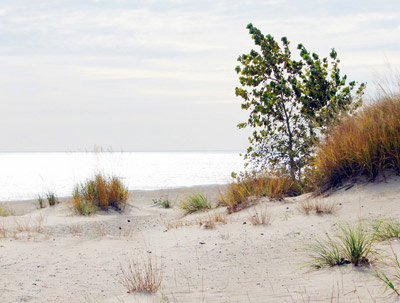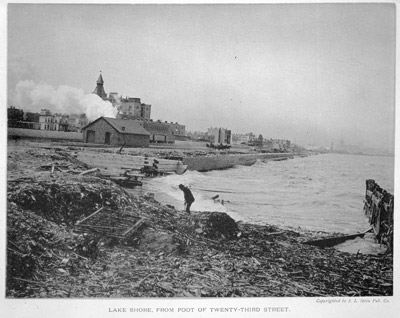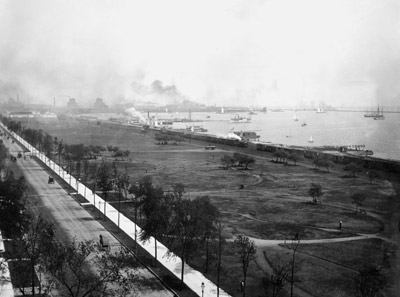Chicago Yacht Club

Back to Chicago Yacht Club
Back to Chicago Yacht Club
Habitats lost
Believe it or not, the modern-day downtown lakefront was underwater until the early 1900s. The natural shoreline, which sat near Michigan Avenue, was lined with rich swampland that served as homes for fish and other aquatic wildlife. When the city began expanding into the lake, habitats along the water's edge were slowly replaced with streets, buildings, parkland, and this seawall. The same is true for much of the Chicago-area shoreline. Today, you would have to travel to Illinois Beach State Park near the Wisconsin border to see a shoreline that looks similar to how it was in the 1800s.
The new lakefront provided residents with more public space and made it easier for boaters and anglers to access the shore, but it also displaced habitats that protect water quality and keep fish and other wildlife healthy. The shallow water, rocks, driftwood, and plants along natural shorelines provide food, breeding grounds, and protection from predators for everything from water birds to crustaceans. In fact, nearly every aquatic species in Lake Michigan spends part of their life in nearshore waters or eats species that do. The plants and soil of wetlands and beaches also trap contaminants carried in rain and prevent them from polluting the lake.
Millions of migratory water birds – including ducks, grebes, and loons – also stop along the Chicago lakefront to rest and refuel each year. Easy access to Lake Michigan and its buffet of food has historically made the lakefront an ideal layover location. But the changing shoreline and loss of habitat has left these species with a dwindling food supply.
The city has launched several habitat restoration projects over the years to make the shoreline bird-friendly again. More trees and shrubs have been planted in lakeside parks, structures that proved hazardous for birds have been removed or redesigned, and aquatic plants and rocks have been placed near the water's edge.
The new lakefront provided residents with more public space and made it easier for boaters and anglers to access the shore, but it also displaced habitats that protect water quality and keep fish and other wildlife healthy. The shallow water, rocks, driftwood, and plants along natural shorelines provide food, breeding grounds, and protection from predators for everything from water birds to crustaceans. In fact, nearly every aquatic species in Lake Michigan spends part of their life in nearshore waters or eats species that do. The plants and soil of wetlands and beaches also trap contaminants carried in rain and prevent them from polluting the lake.
Millions of migratory water birds – including ducks, grebes, and loons – also stop along the Chicago lakefront to rest and refuel each year. Easy access to Lake Michigan and its buffet of food has historically made the lakefront an ideal layover location. But the changing shoreline and loss of habitat has left these species with a dwindling food supply.
The city has launched several habitat restoration projects over the years to make the shoreline bird-friendly again. More trees and shrubs have been planted in lakeside parks, structures that proved hazardous for birds have been removed or redesigned, and aquatic plants and rocks have been placed near the water's edge.


